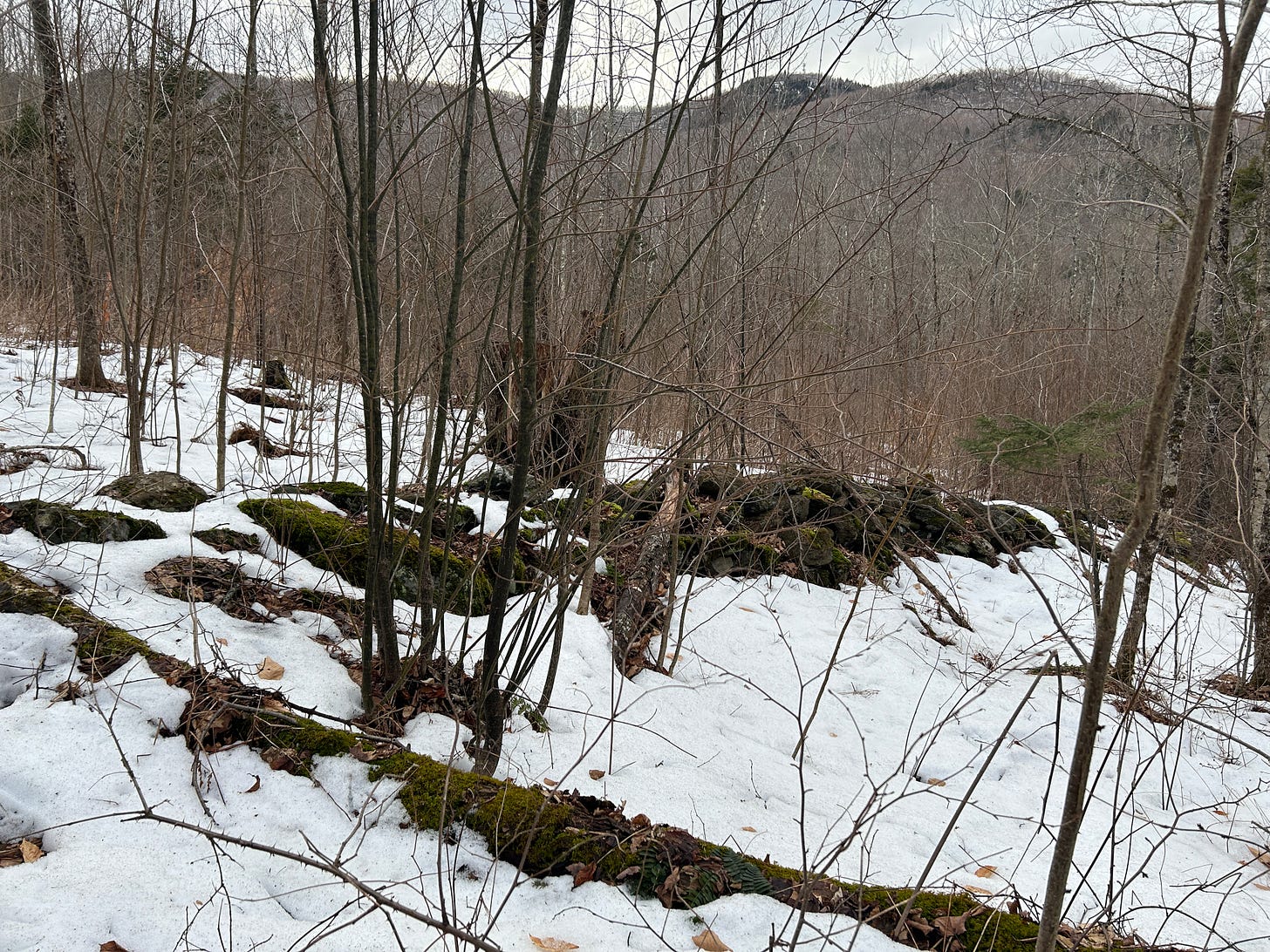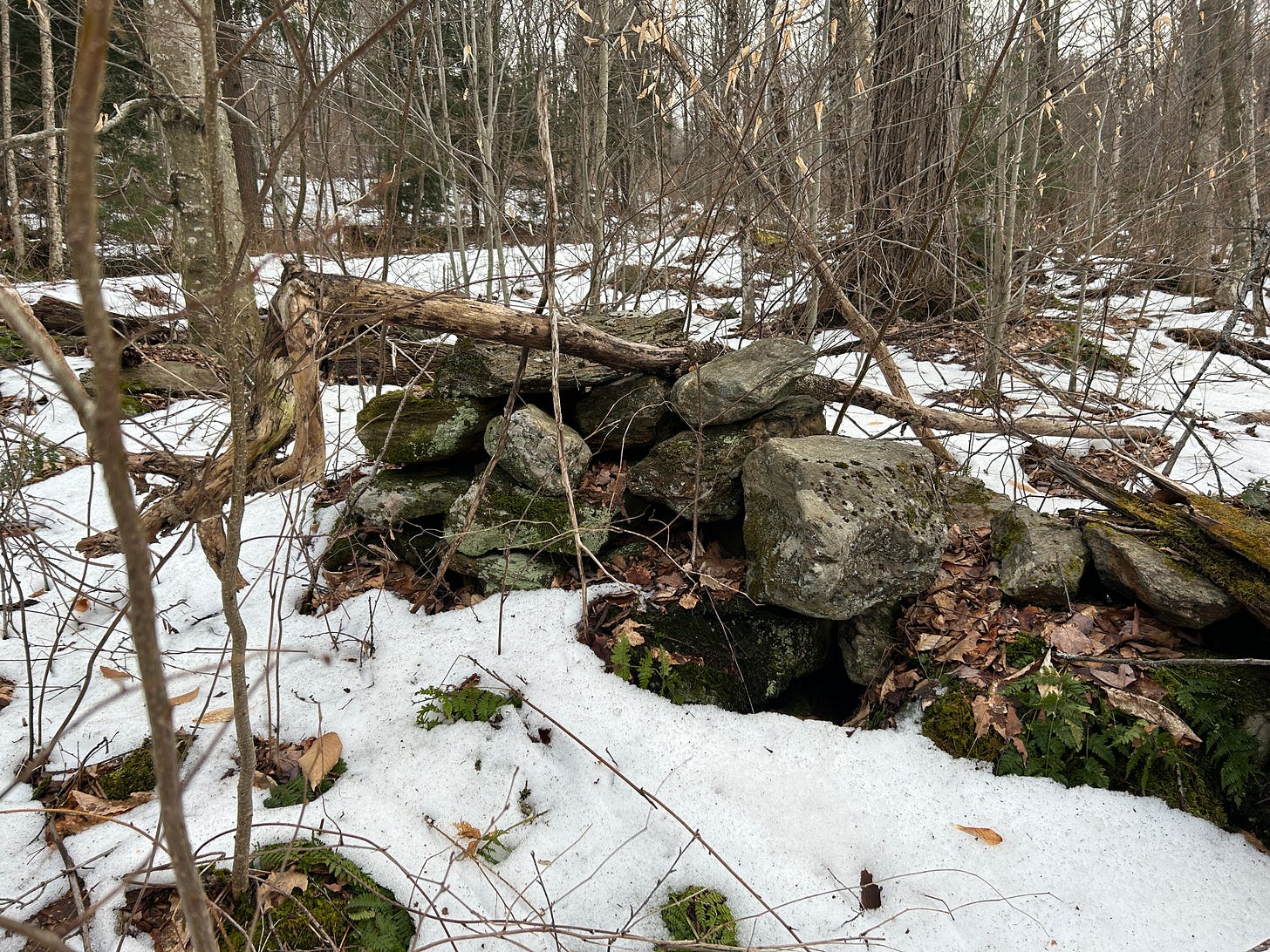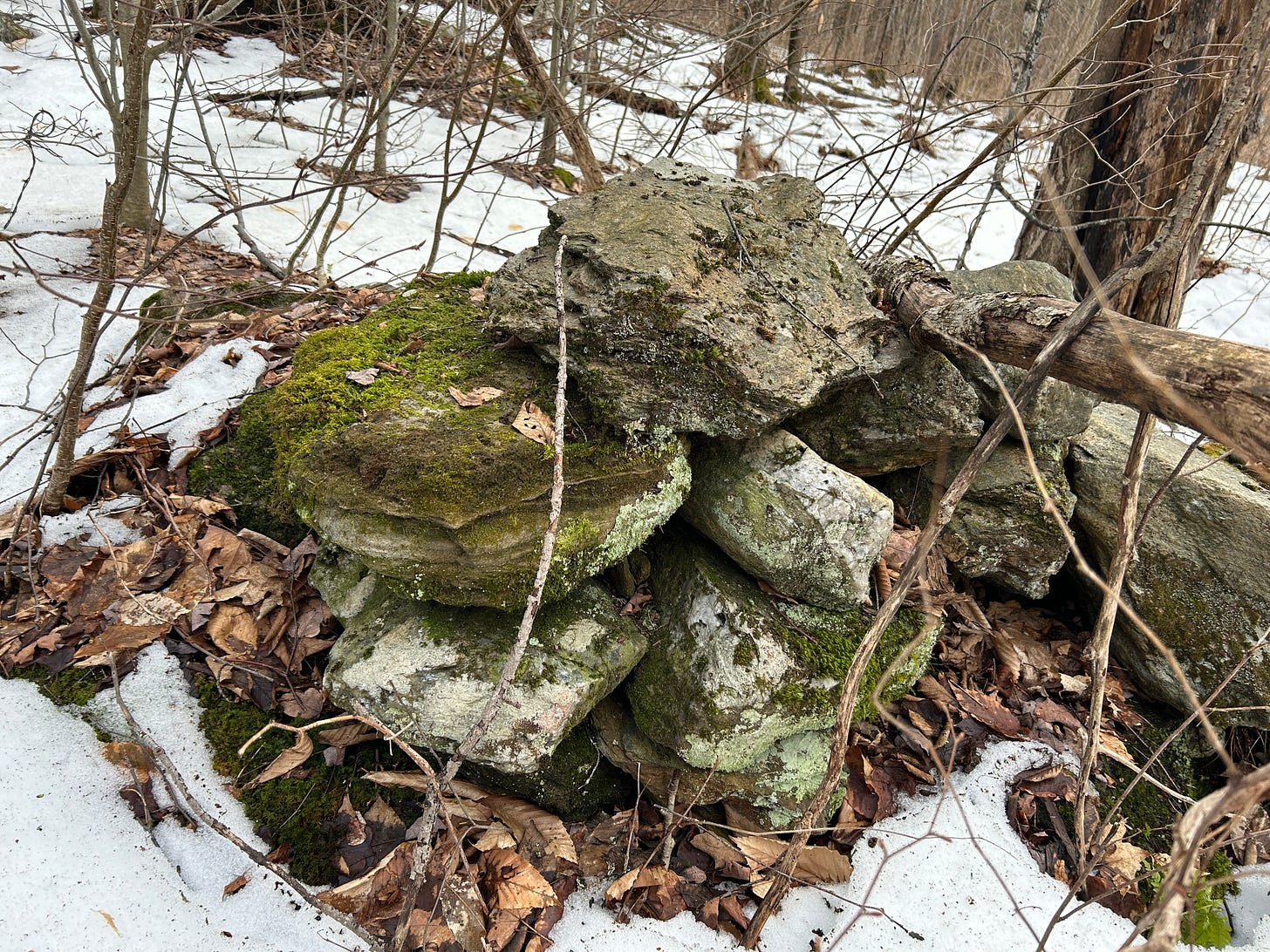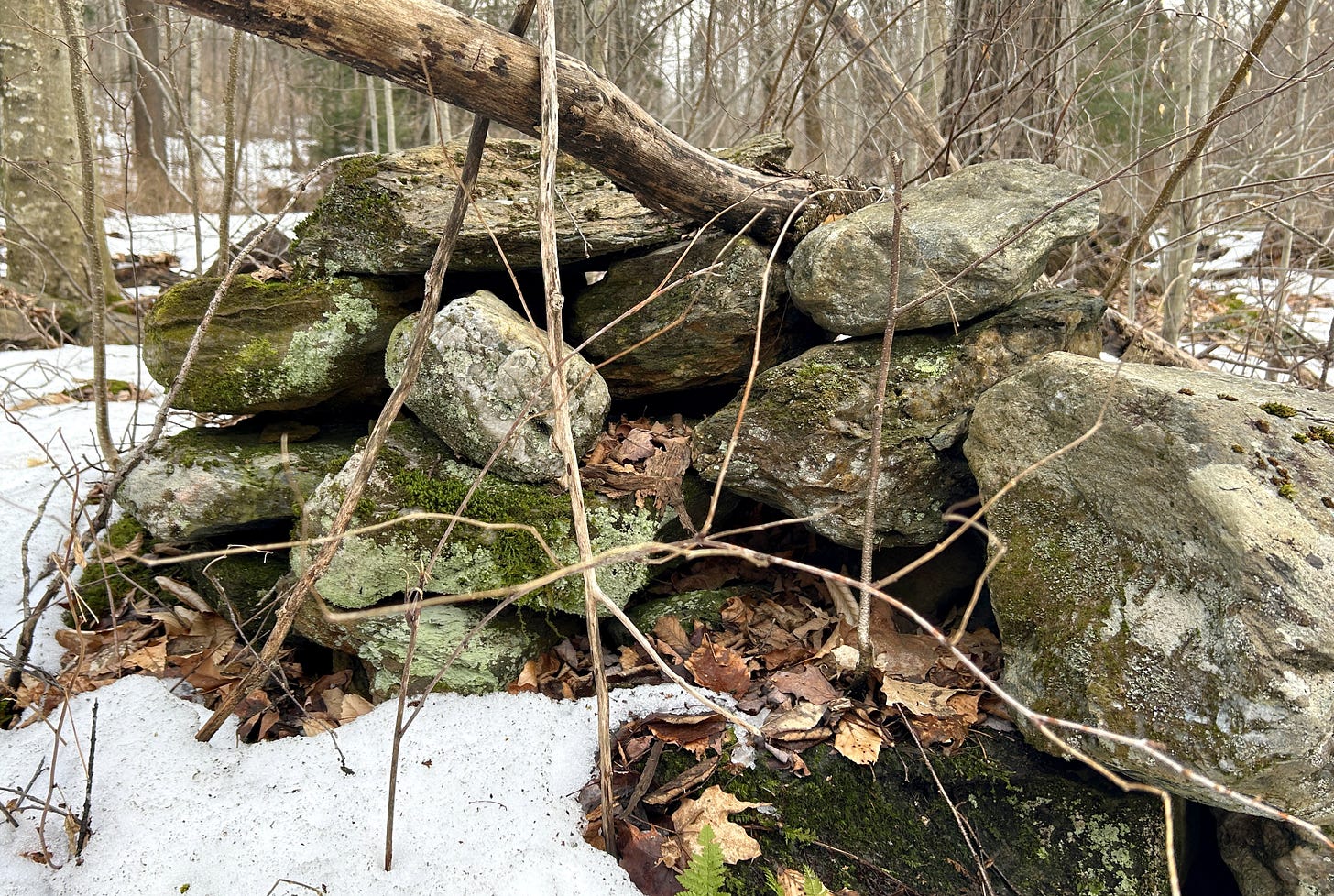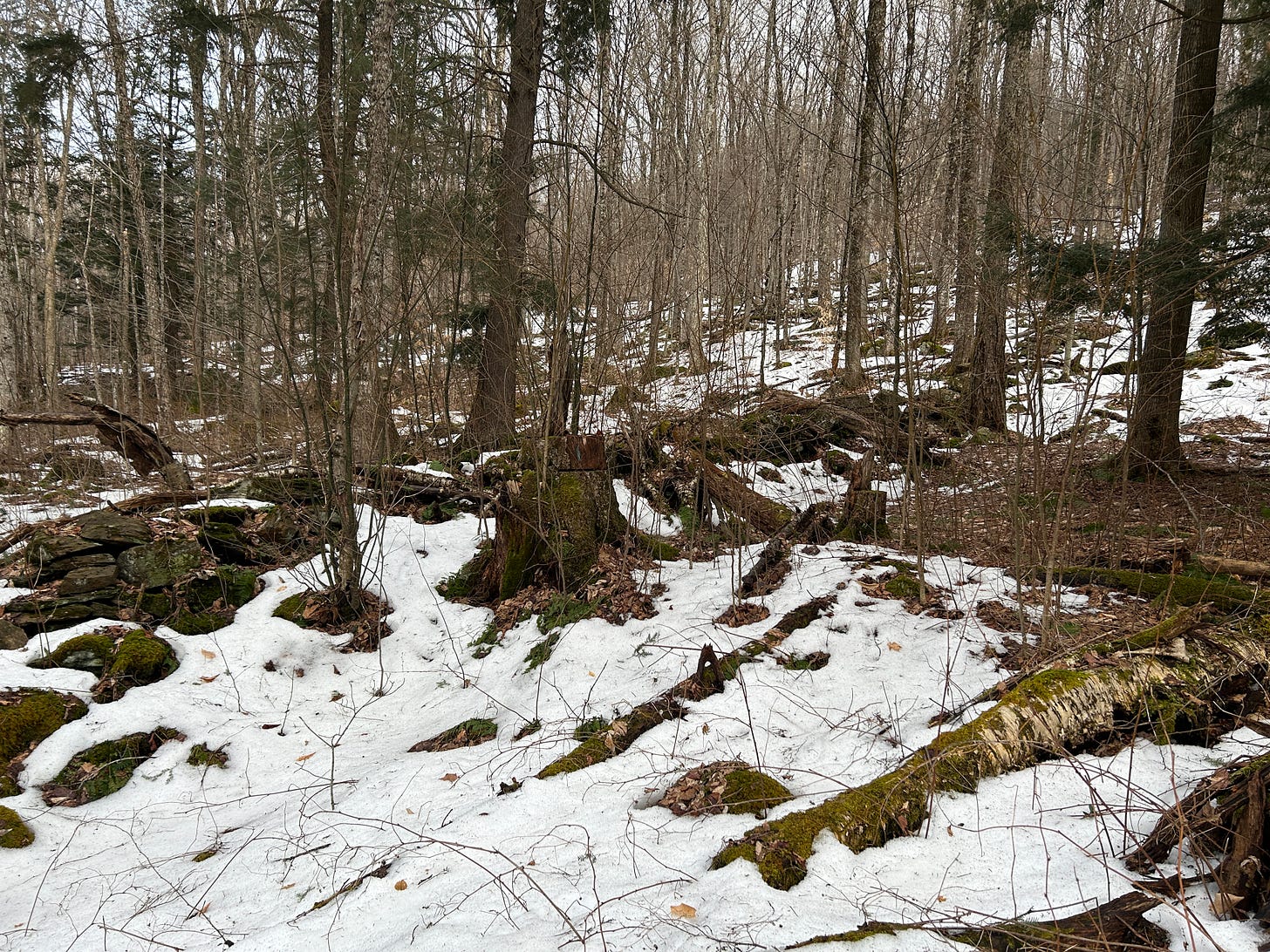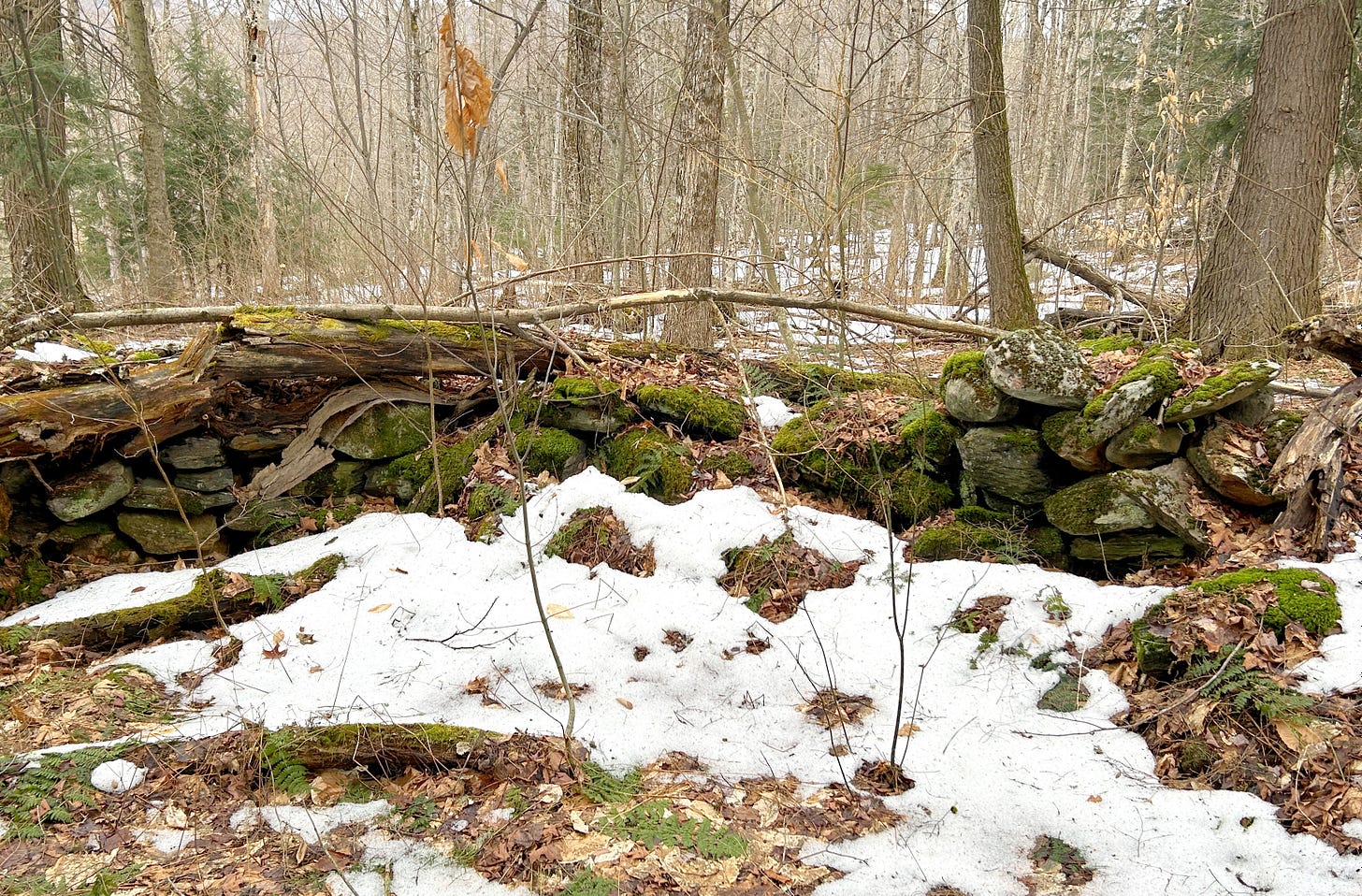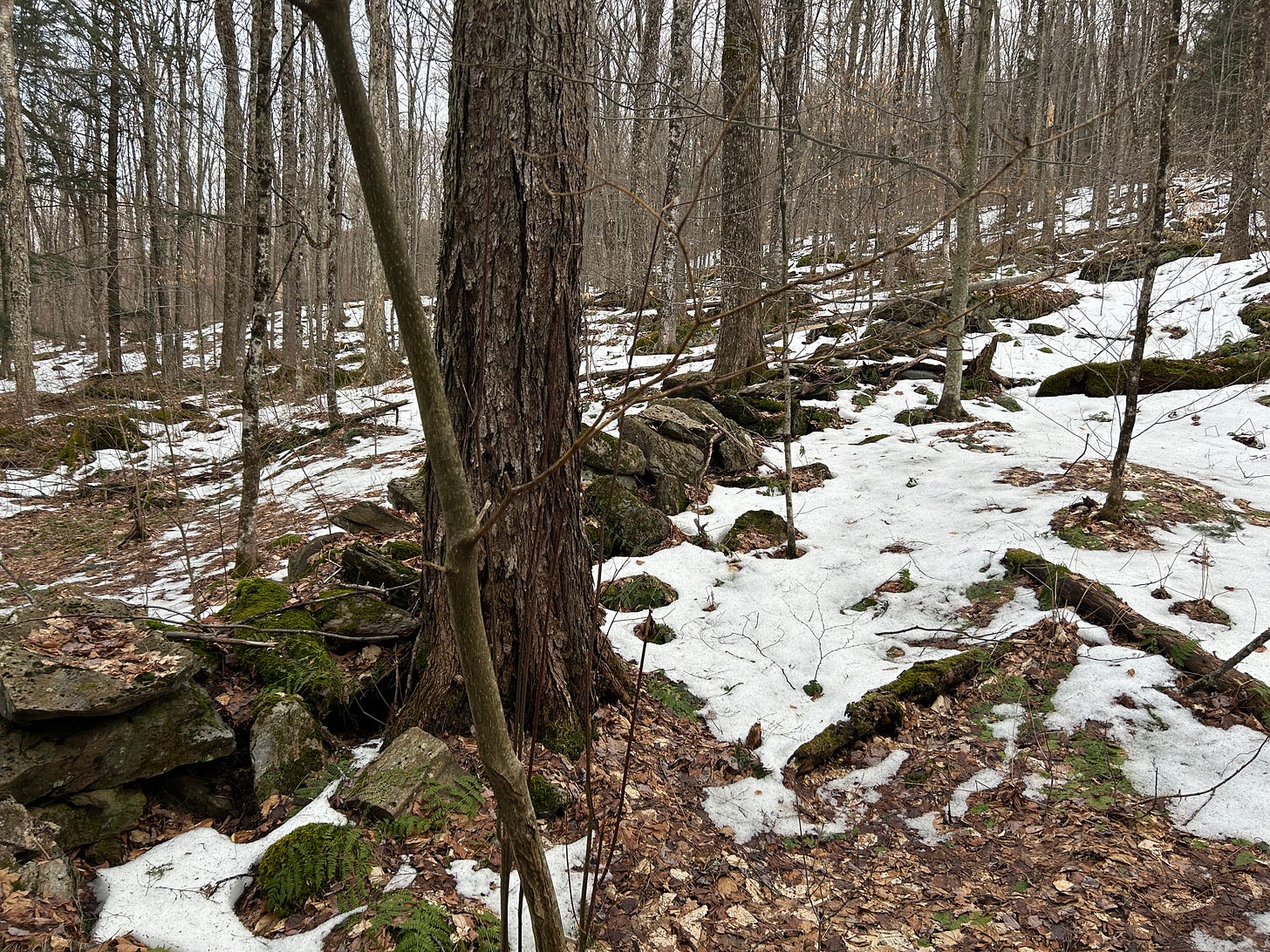I’m a horrible hiker.
At least, I am now. Not that I used to be a great hiker, but I didn’t used to stop and take in the stonework. These days, I don’t usually get very far — unless there’s nothing much to see. Of course, even then I’m kinda slow — because I keep on looking.
I’m not really covering a lot of ground, for example, as I continue to explore this Mountain Hollow near Richmond, Vermont. YouTube viewer Michelle S. tipped me off to possible Indigenous Stonework here, and I have yet to see everything she’s told me about.
Taking advantage of weirdly warm February weather, I did get a bit further along the trail and a bit higher up this past weekend, and found some higher altitude stone rows.
The ground was mostly bare as I headed into the hollow, but as I climbed the snow cover returned and deepened with the increasing altitude. Didn’t realize quite how deep the snow had gotten until I stepped off the trail to get a look at the lower part of this stone row intersected by the trail.
Surprise! Recent melting made the snow cover look deceptively even. Taking a few steps, I found it wasn’t. The snow was mostly ankle-deep, but occasionally I plunged down to my calf or — conversely — met solid ground less than an inch down.
Deciding it wouldn’t be wise to follow the stone row too far in such ankle-twist-inducing conditions, I focused on the stretch in front of me.
Was that a surrounded stone?
These stone rows are assumed by many to be farmers’ stone walls, created in the 19th century. They were likely used by farmers, as agriculture took place in this hollow back in the day. And Vermont was known for hill farms — higher altitude tracts than typical today were used as farmland.
Looking into Indigenous Stonework, including Serpent Rows, mostly in New England, I’d noticed repeated designs and motifs in some of the stone rows. Curiously, some naturalists proposing that all stone walls were built by farmers didn’t seem to see these forms and dismissed the work as tossed or random stones.
On the contrary, I found these forms were similar to those pointed out by other amateur stone site investigators who drew comparisons between these forms and Algonquian-influenced Serpent Iconography — and sacred Indigenous Serpent iconography in general. For more on that, see What I Look For In The Stones…
One of the things I look for is Surrounded Stones - circular shapes, often constructed with quartz stones as the center stone. And this appeared to be one, at the row’s trail end on this lower side.
On the upper side of the trail, the snow cover and the way the trail cut through the hillside obscured any trace of upslope stonework from the trail itself (you can see this in the video shared below). If I hadn’t seen the lower section, I wouldn’t have know an upper section was there.
Climbing up on the bank, I saw stonework again. A portion of the stone row was exposed, and it curved a bit.
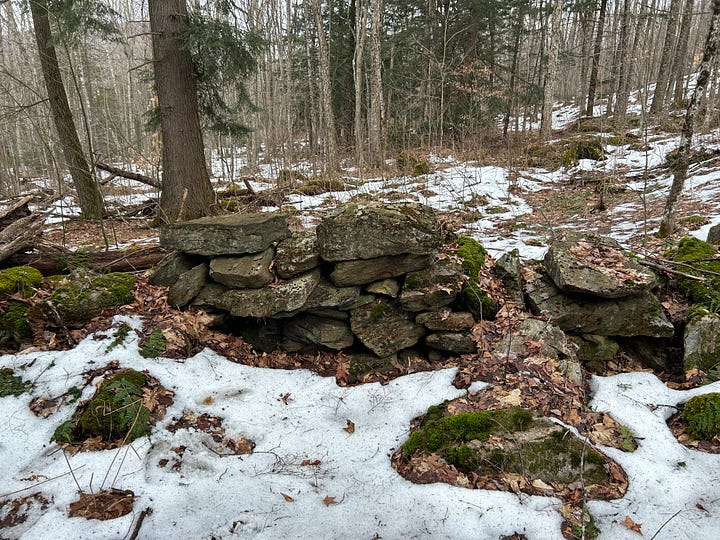
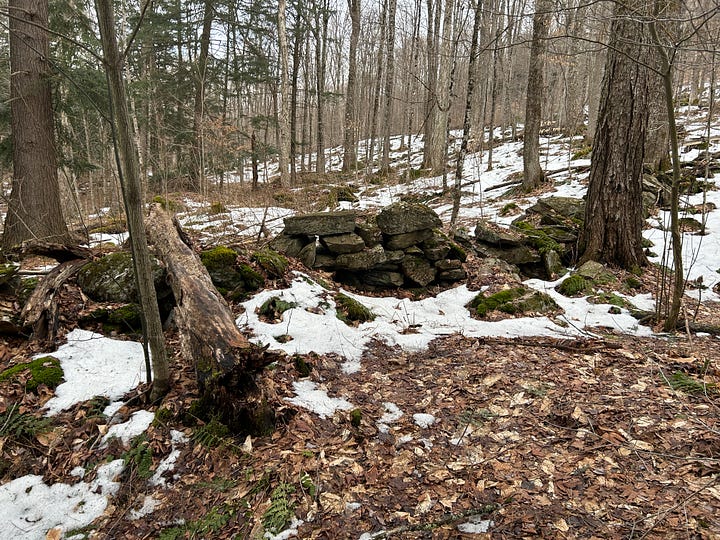
But other than that, this part didn’t have quite as organic a look as the lower section I’d just seen. None of the forms I look for presented itself. And the stone row looked fairly straight as it continued, though it often disappeared in the snow as it headed away uphill.
In the bonus videos that follow, you can see how the uphill side of the stone row was nearly invisible from the trail. And, back on the lower side, get in close on the Surrounded Stone… that center stone might be quartz. There’s also another look at the upper section, the curve and the boxier part, and a look up the hill.
Keep reading with a 7-day free trial
Subscribe to Ancient Stone Mysteries to keep reading this post and get 7 days of free access to the full post archives.






